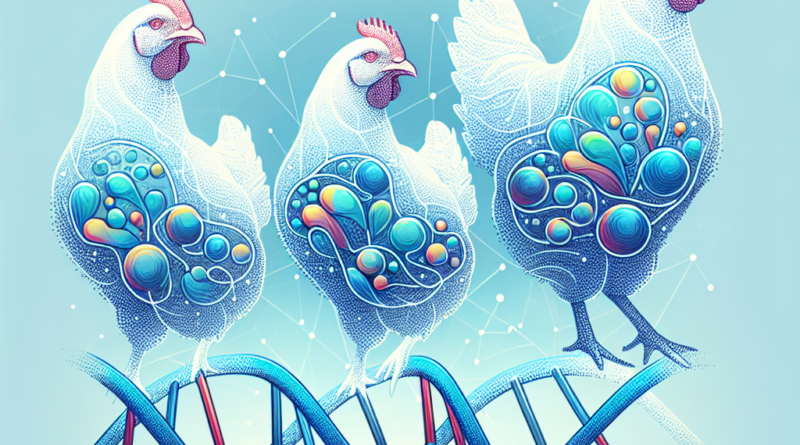Antibiotic Resistance and Virulence Gene Profiles in Avian Pathogenic Escherichia coli from Qatar’s Poultry
Understanding Avian Pathogenic Escherichia coli
Avian Pathogenic Escherichia coli (APEC) is a significant pathogen in the poultry industry, leading to disease in birds and substantial economic losses. APEC causes a range of extraintestinal diseases collectively known as colibacillosis, which can lead to high mortality rates in poultry flocks. Understanding the biology and virulence of APEC is crucial for developing strategies to combat this pathogen.
Escherichia coli, commonly known as E. coli, is a diverse group of bacteria. While most strains are harmless and part of the normal gut flora in humans and animals, some can cause severe diseases. APEC is one such pathogenic strain, and it possesses specific virulence genes that enable it to cause disease outside of the intestinal tract.
The virulence of APEC is associated with a set of genes that allow it to survive in the host’s bloodstream, adhere to cells, acquire essential nutrients like iron, and resist the host’s immune defenses. These virulence factors are often encoded on plasmids, which are small, circular DNA molecules separate from the bacterial chromosome. Plasmids can be transferred between bacteria, spreading virulence factors and antibiotic resistance.
Results of the Study
Sample Isolation and Identification of APEC
In the study, 158 E. coli strains were isolated from various organs of both non-healthy and healthy broiler chickens. A significant majority, 65%, were identified as APEC strains based on the presence of five or more virulence genes. The presence of these genes was significantly higher in strains from non-healthy chickens compared to healthy ones, indicating the role of these genes in disease.
Virulence Gene Detection
The study found that certain virulence genes, such as ompT, hlyF, iroN, tsh, iss, cvi/cva, and iucD, were prevalent in all APEC strains. These genes contribute to the bacteria’s ability to cause disease and their detection in APEC strains was significantly higher than in non-pathogenic E. coli (NPEC) strains.
Antibiotic Resistance Patterns
The E. coli isolates exhibited alarming levels of antibiotic resistance, with 96% showing resistance to at least one of the 18 antibiotics tested. High resistance was noted for commonly used antibiotics such as ampicillin, cephalothin, ciprofloxacin, tetracycline, and fosfomycin. This high prevalence of resistance is concerning, as it limits treatment options and poses a risk of transferring resistance to humans.
Impact of the Study
The findings of this study have significant implications for public health and the poultry industry. The high prevalence of APEC strains with multiple virulence genes in poultry indicates a potential risk for disease spread within flocks and to humans through the food chain. The widespread antibiotic resistance observed in these strains is particularly concerning, as it suggests that current methods of antibiotic use in poultry farming are contributing to the problem.
Antibiotic resistance is a global health issue, and the study’s results underscore the need for better antibiotic stewardship in the poultry industry. The high levels of multidrug resistance (MDR) in E. coli strains from both non-healthy and healthy chickens highlight the urgency of developing alternative strategies to prevent and control bacterial infections in poultry.
Moreover, the study’s findings support the need for ongoing surveillance of APEC strains and antibiotic resistance patterns. This can help inform policies and guidelines for antibiotic use in poultry farming, which is critical for safeguarding both animal and human health.
Future Prospects
While the study provides valuable insights into the prevalence and characteristics of APEC in broiler chickens, it also raises questions for future research. There is a need to explore the mechanisms of antibiotic resistance and the transfer of resistance genes between bacteria. Additionally, developing vaccines and alternative treatments that do not rely on antibiotics could be crucial in managing APEC infections.
It is also essential to investigate the potential for APEC strains to cause disease in humans and the role of poultry as a reservoir for pathogenic E. coli that can infect humans. Further research in these areas will be vital for developing comprehensive strategies to combat the spread of APEC and antibiotic resistance.
Reference
Johar, A., Al-Thani, N., Al-Hadidi, S. H., Dlissi, E., Mahmoud, M. H., & Eltai, N. O. (2021). Antibiotic Resistance and Virulence Gene Patterns Associated with Avian Pathogenic Escherichia coli (APEC) from Broiler Chickens in Qatar. Antibiotics, 10(5), 564. 10.3390/antibiotics10050564




